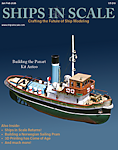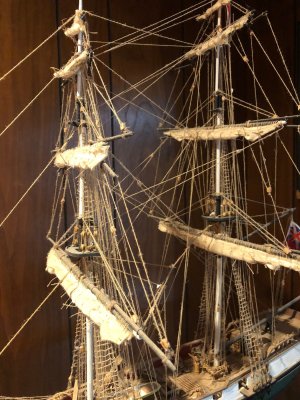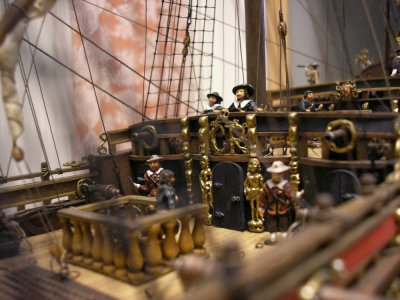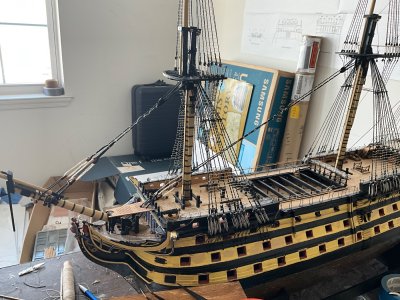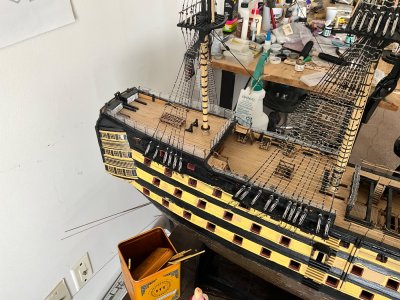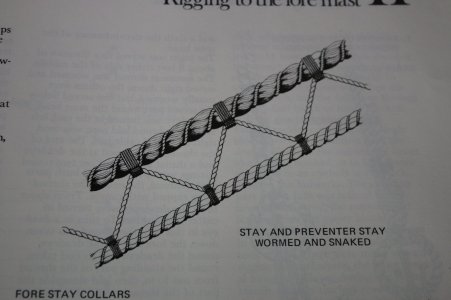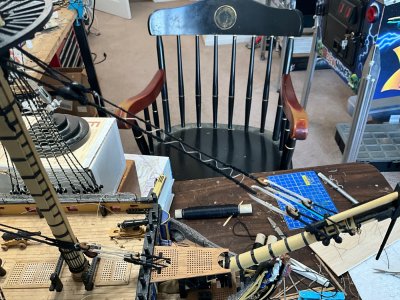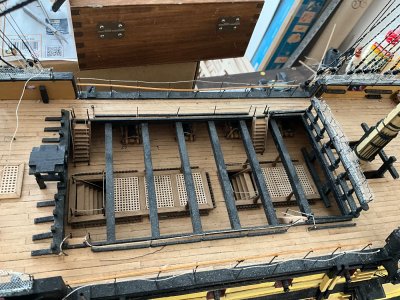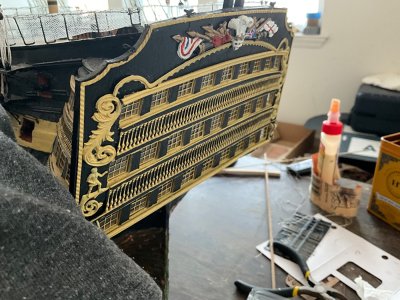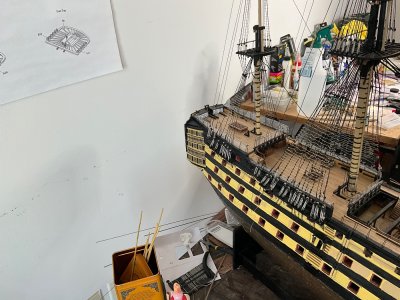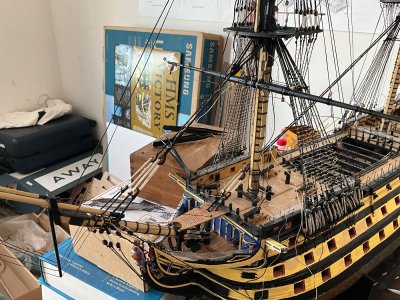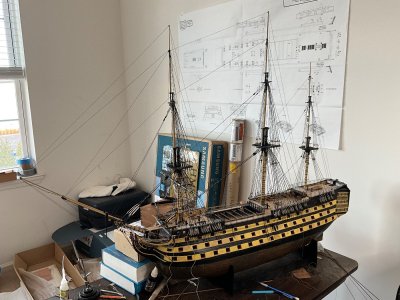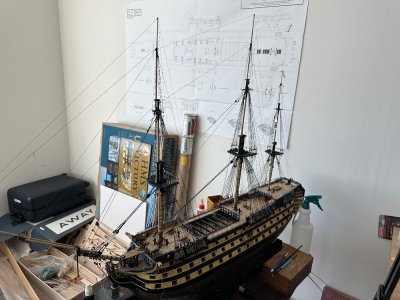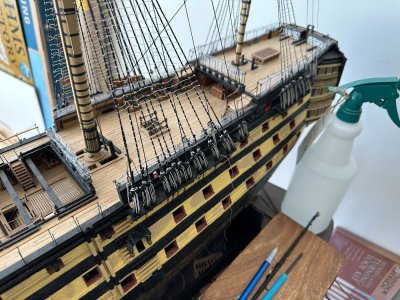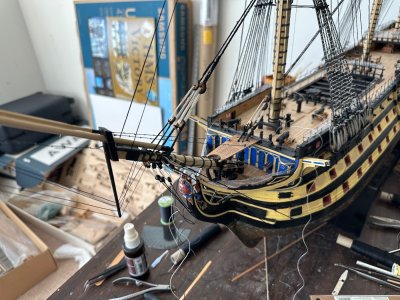I think that if the sails can be starched to show fullness, that would be perfect. Those are perfect examples of what options there are.
For me, I'd love to add sails, but this is my first wooden model and the plans don't really show how sails would be rigged. This would require outside references and a lot of research of other builds to get my bearings.
That will be a task for the next model!!!!!
My first model kit instructions didn't show the running rigging for sails either, so I had to look to books and other sources to learn what the typical lines for operating the sails were and how they were typically rigged. For my 17th century ship, the choice of books was simple (
The Rigging of Ships in the Days of Spritsail Topmast, 1600-1720 by Roger C. Anderson, and
Construction of the Model of La Couronne, French Vessel of 1636 by Vincenzo Lusci), the latter being very scarce and written in Italian. For
HMS Victory, there are many contemporary books out there on how to rig the ship. John McKay's book "Anatomy of a Ship" may be one. Be prepared to translate a book into your native language, since many truly great books are found across the world. The trick is finding them and purchasing them, and that could be quite a hunt. Ask other forum members if they know of book specific to your ship. If not, you have to rely on books that decribe rigging in a more general search, and that would mean you have to make more guesses as to how the lines are routed (roved) and where they are belayed.
Sources may also include period contemporary images such as paintings and engravings like this, which give you general information on the arrangement, block locations, and routing of the lines:

You will have to gather research information and make a sail and rigging plan, choosing between elements that differ between your sources. Sources could include rigging instructions from other kits. For my ship, these I used the plans attached below to create a sail plan to determine the dimensions of the sails. The size of the sails was also derive by measuring the yardarms, and the vertical distance between the yards after they were rigged to the masts.
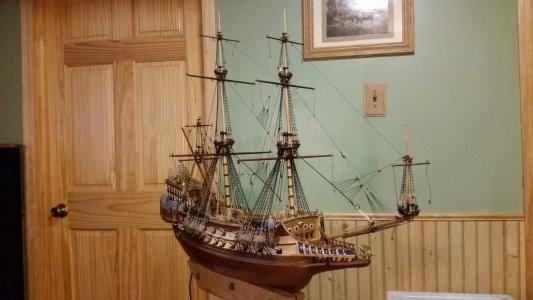
These plans show rigging for a 17th century European continental (French) ship. English rigging has notable differences in a few lines, particularly the lifts, which support the outer ends of the yards. Choose the rigging style that matches your model.

Then for each line, you need to know where to secure it at the deck or in the tops. For that, you need to develop a belaying plan like this from your sources:
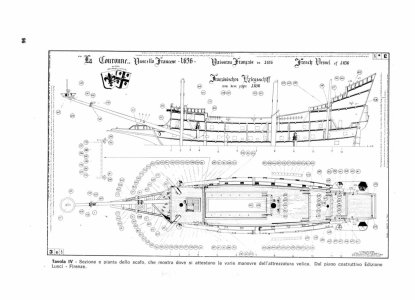
Once you are familiar what all the sail handling lines are called by name, and have your rigging plan, belaying plan, and sail plan prepared, you are ready to make the sails. For this, Ohla Batchvarov's tutorial on cutting and sewing sails is truly excellent.
Making billowed sails requires a few extra steps, but the final effect is incredibly lifelike. A 97% cotton, 3% spandex cloth material stretches well and holds its shape when starched and dried on a sail stretching jig that you construct yourself.
For more details, see my build log for
La Couronne.



